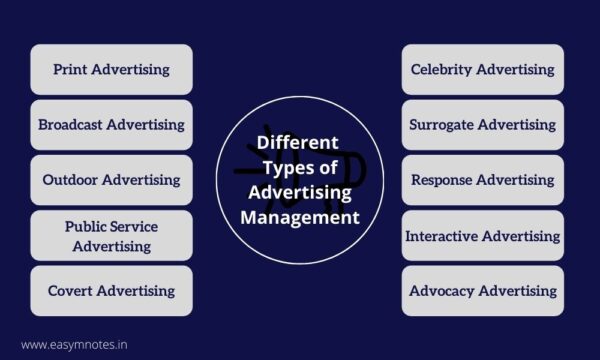How to Have a Single View of Ad Inventory Across Channels
The advertising world has been evolving for centuries, but the last few years have rapidly accelerated the ways businesses have adapted. COVID 19 upended how businesses approach digital transformation, and this progression in the digital landscape directly impacts advertisers.
Managing ad inventory is an increasingly complicated task, and as the number of channels available to advertisers continues to grow, accessing a single view of ad inventory is a valuable resource for advertisers.
Measuring Digital Ad Inventory
In traditional advertising, ad inventory is fairly straightforward. Since print ads, billboards, mailers, etc., exist as physical objects, advertisers still have to deal with the challenges of unreliable information and limited visibility, but they still have a tangible object to track.
Even linear advertising on television and radio has the advantage of being trackable and scheduled, even though they don’t include a physical object you can manage.
Digital advertising, on the other hand, opens up a new world of ad inventory management. Digital ads can be difficult to measure because they don’t involve a tangible object like a billboard or newsletter and don’t always occur on a predetermined schedule. In addition to those differences between digital and traditional advertising, advertisers can measure digital ads in unique ways that advertisers should become familiar with.
Page Impressions
Page impressions track the number of visits a web page receives. Because it’s such a simple, easy-to-track metric, it’s a ubiquitous method of measuring ad sales in units such as Thousand Contact Price (TKP) or Cost Per Mille (CPM). The logic is straightforward: when a user loads a web page, the host tracks their visit using built-in HTML, and advertisers can assume that if a user viewed the web page, they also viewed any advertisements displayed as part of the page.
The downside of this method is that non-human users can also load web pages, resulting in inflated page impressions that don’t correspond to actual ad views. Therefore, advertisers don’t use page impressions as their only metric for measuring ad inventory.
Ad Value
Ad value is a more speculative way of measuring ad inventory by calculating ads’ anticipated value based on variables such as page position, frequency, schedule, etc. Because of the complexity of measuring ad value, it is not a one-size-fits-all solution to ad inventory management, but it’s a valuable metric for advertisers and platforms alike.
Cost Per Click, Action, or Acquisition
The ultimate goal of advertising isn’t just to get viewers to experience an ad—the ultimate goal is to acquire business with viewers. Because the goal of advertising is ultimately to make sales and increase goodwill, page impressions and ad value are imperfect ways of measuring ad inventory.
Advertisers should combine measuring the cost per click, action and acquisition with these other metrics to determine how many prospective actions your ads will buy. This is an important metric for measuring ad inventory because it evaluates the potential outcomes of your ad inventory rather than just the number of eyes on your advertisements.
Multi-Channel Advertising
Advertising has changed in the last few decades, and it stands to reason that it will continue to change. Effective advertising is not a “no, but…” game, but rather a “yes, and…” activity.
Put another way, effective advertisers use more than one ad channel. While many consumers have moved online in recent years, linear advertising on television and radio, influencer marketing on social media, and outdoor advertising on billboards and public transit—among other channels—remain huge areas of opportunity for advertisers.
The job of an advertiser, then, is to manage ad inventory across multiple channels, which increasingly use different metrics for managing inventory. Connecting these disparate pieces of information is a challenge, but it isn’t insurmountable, especially with the help of Salesforce managed services.

Challenges of Managing Ad Inventory
New opportunities bring with them new challenges. For advertisers, the digital advertising space is a substantial new opportunity, but managing ad inventory across channels is a substantial new challenge that advertisers need to keep up to date with.
Limited Visibility
One of the challenges of managing ad inventory is that advertisers may have limited access to peek under the hood. This can be because ad platforms don’t offer enough access to up-to-date information, or it can simply be due to the logistical challenges of keeping up with inventory across multiple channels.
Managing inventory across channels can begin to feel like missing the forest for the trees—there are so many metrics for advertisers to keep track of that grasping a broader knowledge of ad inventory is a herculean task without specialized tools or expert guidance.
Inconsistent Documentation
Unfortunately, advertising is not immune to the ailments that plague other areas of business. Before satellite GPS and Google Maps, people relied on printed maps for navigation. If and when an error made its way onto a physical map, users had no way of verifying or correcting the error aside from a painstaking scrub of the entire document to look for inconsistencies across different maps.
That level of document integrity is impractical or impossible with physical maps, and ad inventory is much the same way. Without a dynamic source of truth to check documents against, there is no practical way for users to verify the accuracy of their documentation, especially when the information it includes is constantly changing.
This challenge is one of the reasons Salesforce is an exceptionally useful tool for managing ad inventory across channels because it allows advertisers to see up-to-date, accurate information that is dynamic and verifiable. This mitigates the opportunity for bad data to infiltrate and propagate across documentation.
Over/Under Inventory
When advertisers don’t have a strong picture of the status of their ad inventory, even the sharpest minds can’t make informed decisions about ad purchasing. One of the advantages of ad management software is that it allows decision-makers to see accurate information across multiple channels to make timely and informed decisions about when to purchase ad inventory.
How Rainmaker Helps Provide a Single View of Ad Inventory
There’s a reason that accountants condense periodical data into reporting documents, educators condense assignment evaluations into report cards, and entertainers condense their offerings into “one sheet.”.
Having data is half the battle—putting that data into the right context so that advertisers can make well-informed decisions and gain relevant insights is the other half.
That’s where Salesforce enters the picture with its 360-view of marketing. Salesforce brings information from different ad channels into a single view of ad inventory so advertisers can see everything from their customer relationships to ad budgets from one definite view of truth.

Rainmaker is an expert in Salesforce managed services. Integrating Salesforce into your advertising workflow gives you access to the benefits of a single view of your ad inventory, and Rainmaker specializes in making that process as painless and error-free as possible.
If you’re ready to take your advertising strategy to the next level, contact Rainmaker today to schedule a meeting and learn how Rainmaker can help.






